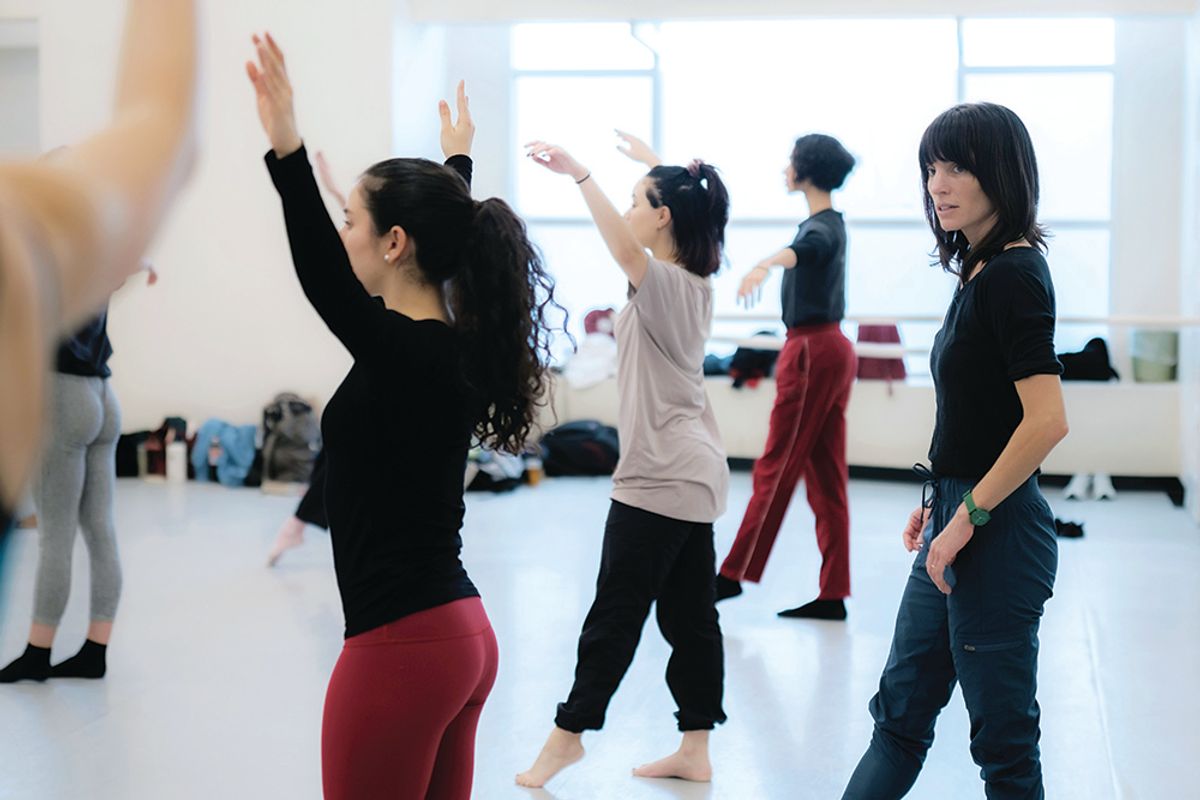
In a contemporary dance class at the University of North Carolina School of the Arts, instructor Kira Blazek Ziaii gives a stationary exercise inspired by Countertechnique, the movement system developed by Anouk van Dijk. By directing parts of the body away from each other in space, dancers learn to work with an ever-changing dynamic balance. To begin, Ziaii asks her students to shift their attention to different areas of their bodies, like jaws and armpits. “It can be illuminating for people to take their mental awareness to those places,” says Ziaii. “It may also be helpful bridging the gap to coordination.”
Some dancers naturally have a good sense of how to move smoothly and efficiently, while others need help organizing their bodies and connecting movements. Improving coordination can be slow, methodical work that requires a great deal of patience and technique. But giving students both intellectual and physical tools will help them develop a well-rounded approach to movement and dance more cohesively.
Be methodical
Teachers can approach coordination by repeating exercises that require both upper- and lower-body movements. “I find it’s best to start at the barre,” says Jenna Lavin, principal of Ballet Academy East’s pre-professional division. “Once the students have learned proper turnout, alignment and strength, you can add simple port de bras into the exercises.” Lavin’s third-year students (ages 9 and 10) start working on this coordination in tendu combinations, for example. The arm goes to high fifth with tendu front. The arm moves to second in tendu side, and then to first arabesque with tendu back.
Lavin will also give eight dégagés in first, while the arm makes a circle, and then repeats with reversed port de bras. She breaks down the movement so students understand where the arm and eyes should be on each count. “Some kids have it naturally and others don’t. But we’ve seen remarkable improvement through this kind of patient work and repetition.” Barre combinations that include transfers of weight, changing from inside to outside working legs, can also prepare students to make coordinated transitions once they are in center.
Try using everyday language
At San Diego Civic Youth Ballet, Jessica Reed-Cancel focuses on imagery in her modern class to help students find better coordination. “I use people words, not necessarily dance terminology,” she says. “Things that are familiar to them and will inspire an immediate response.” For instance, she will say “angry cat tails” and “swish, swish” to describe leg swings, so dancers capture the quality of movement before forming a technical association. “If I tell them to drop, release and then ‘cat tail,’ it will bring out a more instinctive way of moving,” says Reed-Cancel, “and inspire dancers to make use of their natural coordination.”
Reed-Cancel also suggests using words inspired by the natural world to get students moving away from static shapes and working instead with sensation. “Talk about the way things move in the water, like anemones or seagrass. Toss your hair and see how the weight of it feels,” she says. “Rein it in when you need to, but the students should be OK with experimenting and making mistakes.”
Focus on transitions
Coordinated dancers flow from one movement to the next, seamlessly working through transition steps as well as technical elements. “They don’t just stop in between phrases,” says Reed-Cancel. “I try to help dancers find alignment, but not get stuck so they feel like a statue. They need to be able to let go and fall off their legs.” Use of breath, and how it integrates the body, can also help as dancers work with oppositional pull. “Transitions will be easier and more organic when dancers find the maximum span of movement before moving on to the next one.” When dancers have good understanding of where they are in space, and where a movement starts and ends, they are more likely to be well-coordinated.
Ziaii encourages students to use their body weight and observe how it supports them through energy and space, to allow for greater coordination. “Talk to dancers about making more space between the pelvis and rib cage, and holding it there throughout the activity. We want parts of the body to be available to move without holding those pieces together,” she says. “Can coordination be taught?” asks Ziaii. “I don’t know. But you can make an environment where the dancers can start to self-organize.”




